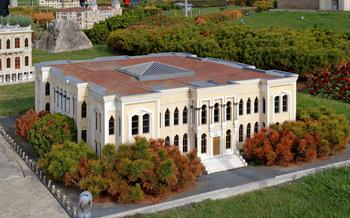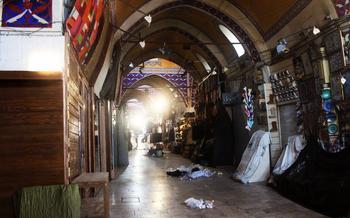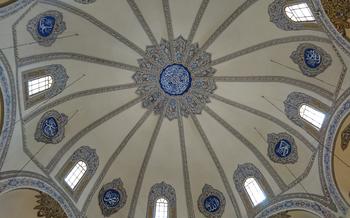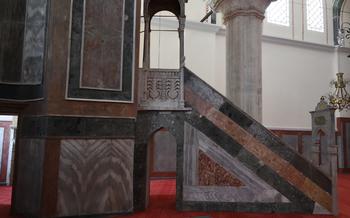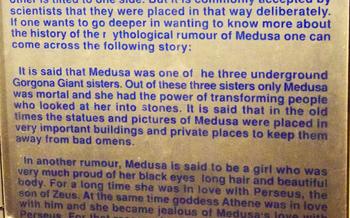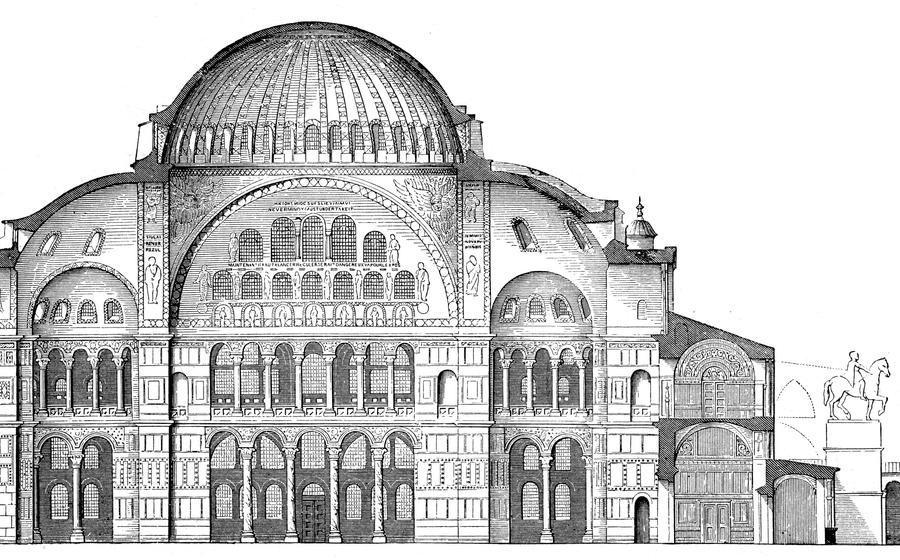
Hagia Sophia
- Hagia Sophia: A Timeless Masterpiece
- Exploring the Grand Interior
- Unveiling the Exterior Grandeur
- Tips for a Memorable Visit
- Virtual Reality Experience
- The Museum's Treasures
- Rooftop Views
- Hagia Sophia in Literature and Art
- Local Legends and Folklore
- Hagia Sophia Through the Lens
- Conservation and Restoration Efforts
- Nearby Attractions
- Insider Tip: Hidden Gem
Hagia Sophia: A Timeless Masterpiece
Standing tall in the heart of Istanbul, Hagia Sophia is a testament to human ingenuity and a symbol of cultural convergence. This architectural marvel has transcended time, serving as a Byzantine church, an Ottoman mosque, and now a modern museum. Its journey through history has left an imprint of diverse influences, blending Christian and Islamic elements into a harmonious masterpiece.
Hagia Sophia's architectural prowess is undeniable. Its iconic dome, a masterpiece of engineering, seems to defy gravity as it soars above the city skyline. Intricate mosaics, shimmering with gold and vibrant hues, adorn the interior, telling tales of biblical figures and historical events. The soaring minarets, added during the Ottoman era, pierce the sky like celestial spears, symbolizing the fusion of two great civilizations.
Hagia Sophia has stood resilient against the ravages of time. Earthquakes, fires, and conquests have tested its fortitude, but it has emerged from each challenge with renewed glory. Its endurance is a testament to the enduring spirit of humanity and the power of architecture to transcend adversity.
Exploring the Grand Interior
As you step inside Hagia Sophia, prepare to be awestruck by its grand interior, a testament to the architectural genius of its creators. The awe-inspiring dome, a masterpiece of engineering, soars above you, its celestial beauty evoking a sense of wonder. Admire the intricate mosaics that adorn the walls and ceilings, telling hidden stories of bygone eras. The marble columns, with their intricate carvings, stand as silent witnesses to the passage of time. Soak in the ambiance, allowing the whispers of history to transport you back to the days when prayers echoed through these hallowed halls.
Unveiling the Exterior Grandeur
Emerging from the grand interior of Hagia Sophia, the exterior unveils a symphony of architectural marvels that complement its awe-inspiring dome. Four majestic minarets, slender and graceful, pierce the Istanbul skyline, symbolizing the fusion of Byzantine and Islamic influences. These minarets, erected during the Ottoman era, stand as testaments to the architectural prowess of the time.
The imposing buttresses that encircle Hagia Sophia's exterior exemplify the structural genius that has preserved this ancient edifice for centuries. These massive supports, reminiscent of ancient fortifications, bear witness to the earthquakes and fires that the building has valiantly withstood. Their presence adds a sense of strength and resilience to the overall structure.
In contrast to the grandeur of the minarets and buttresses, the courtyard of Hagia Sophia offers a tranquil oasis amidst the bustling city. This serene space, surrounded by elegant arches and columns, invites visitors to pause and reflect upon the building's rich history. The courtyard's peaceful ambiance provides a respite from the crowds and allows for a moment of contemplation.
Upon closer examination, the exterior walls of Hagia Sophia reveal a treasure trove of lesser-known mosaics. While not as elaborate as the interior mosaics, these hidden gems offer glimpses into the building's Byzantine past. Depicting religious scenes and symbolic motifs, these mosaics add another layer of intrigue to the already captivating exterior of Hagia Sophia.
Tips for a Memorable Visit
When visiting Hagia Sophia, be prepared for large crowds, especially during peak tourist season. Plan your visit accordingly and arrive early to avoid long lines. To capture the best photos, visit during the golden hours of sunrise or sunset, when the light casts a warm glow on the building's exterior. Guided tours are highly recommended to enhance your experience. Knowledgeable guides can provide insights into the history, architecture, and cultural significance of Hagia Sophia, revealing hidden secrets and stories that you might miss on your own. Out of respect for the site's religious significance, dress modestly and avoid wearing revealing clothing. This will ensure a smooth and respectful visit to this sacred and awe-inspiring landmark.
Virtual Reality Experience
Enrich your visit to Hagia Sophia with an immersive virtual reality experience that transports you back in time to witness the grandeur of this iconic monument in its various historical periods.
Don a VR headset and embark on a 360-degree journey through the grand halls, marveling at intricate details and experiencing the sights and sounds of Hagia Sophia as it once was.
Interactive storytelling brings the history of Hagia Sophia to life, allowing you to uncover hidden narratives and gain a deeper understanding of its significance.
Immerse yourself in the immersive world of virtual reality and create lasting memories of your visit to this timeless masterpiece.
The Museum's Treasures
Hagia Sophia is not merely a historical monument but also a treasure trove of ancient artifacts and artistic masterpieces. As you explore the vast interior, keep an eye out for these hidden gems that offer a glimpse into different eras and cultures.
-
Byzantine Mosaics: Admire the exquisite Byzantine mosaics that adorn the walls and ceilings of Hagia Sophia. These intricate artworks depict religious scenes, historical events, and symbolic figures, offering a glimpse into the rich artistic traditions of the Byzantine Empire.
-
Islamic Inscriptions: Discover the beautiful Islamic calligraphy that adorns the interior of Hagia Sophia. These inscriptions include verses from the Quran, the names of Allah and the Prophet Muhammad, and decorative motifs. They showcase the artistic and spiritual heritage of the Ottoman era.
-
Sultan's Loge: Step into the Sultan's Loge, a private balcony located on the upper level of Hagia Sophia. This exclusive space was reserved for the Ottoman sultans and their entourage during religious ceremonies. The loge offers stunning views of the interior and features intricate decorations that reflect the opulence of the Ottoman court.
Rooftop Views
Ascend to the rooftop of Hagia Sophia to be greeted by a breathtaking panorama of Istanbul. The city's skyline unfolds before you, with the Bosphorus Strait shimmering in the distance. Gaze upon the iconic domes and minarets of neighboring mosques, and trace the winding streets that snake through the historic center.
Amidst the architectural tapestry, spot lesser-known landmarks that reveal the city's rich history. Discover hidden courtyards, secluded gardens, and forgotten monuments that narrate tales of Istanbul's past. Observe the city's diverse architectural styles, from the grandeur of Ottoman palaces to the sleek modernity of contemporary skyscrapers.
As the sun begins its descent, the city transforms into a kaleidoscope of colors. The sky explodes in hues of orange, purple, and pink, casting a magical glow upon Hagia Sophia and its surroundings. Experience the tranquility of the rooftop as the crowds disperse, leaving you with a sense of serenity and awe.
Hagia Sophia in Literature and Art
Hagia Sophia's grandeur and historical significance have left an indelible mark on the world of literature and art. Writers, poets, and artists have found inspiration in its architectural beauty, its spiritual essence, and its symbolic significance.
In literature, Hagia Sophia has been immortalized in the works of renowned authors such as Dan Brown, who featured the landmark in his bestselling novel "Inferno." The building's intricate history and enigmatic aura have captivated the imaginations of writers, leading to countless fictional tales and historical narratives that explore its past.
In the realm of art, Hagia Sophia has served as a muse for painters, sculptors, and photographers alike. Its iconic dome, soaring minarets, and intricate mosaics have been captured in countless paintings and drawings, while its grandeur has been immortalized in sculptures and other three-dimensional works.
One of the most famous artistic depictions of Hagia Sophia is the painting "View of the Hagia Sophia" by the Venetian artist Gentile Bellini. Created in the 15th century, the painting offers a detailed and realistic portrayal of the building's exterior, capturing its majesty and its place within the bustling city of Constantinople.
Hagia Sophia's timeless beauty and cultural significance continue to inspire contemporary artists, who find new ways to interpret and express its essence. From modern paintings and sculptures to digital art installations, Hagia Sophia remains a source of fascination and creativity for artists around the world.
Local Legends and Folklore
Hagia Sophia is not merely a historical monument but also a source of captivating local legends and folklore that have been passed down through generations. These enchanting tales add a mystical aura to the site and offer a glimpse into the rich cultural heritage of Turkey.
One popular legend tells of a hidden treasure buried beneath the Hagia Sophia. According to the tale, the treasure was hidden by the Byzantine emperor Constantine XI Palaiologos just before the fall of Constantinople to the Ottomans in 145The legend claims that the treasure is guarded by a fierce dragon, preventing anyone from claiming it.
Another legend speaks of a secret passage that leads from Hagia Sophia to the nearby Topkapi Palace. This passage is said to have been used by the Ottoman sultans to travel between the two landmarks without being seen by the public.
Stories of supernatural occurrences are also common around Hagia Sophia. Some locals believe that the ghost of Constantine XI Palaiologos still haunts the building, mourning the loss of his empire. Others claim to have seen strange lights and heard mysterious voices within the Hagia Sophia.
These legends and folklore add a touch of enchantment to Hagia Sophia, inviting visitors to delve deeper into its history and cultural significance. They serve as a reminder that beyond its architectural marvels and historical importance, Hagia Sophia is also a place steeped in mystery and wonder.
Hagia Sophia Through the Lens
With its captivating architecture and rich history, Hagia Sophia serves as a photographer's paradise, offering countless opportunities to capture stunning images. Whether you're an amateur enthusiast or a seasoned professional, here are some tips to help you make the most of your Hagia Sophia photography experience:
-
Composition is key: Experiment with different angles and perspectives to create dynamic compositions. Capture the grandeur of the dome from below, or find unique vantage points to showcase the intricate details of the mosaics and columns.
-
Embrace natural light: The interplay of light and shadow can transform Hagia Sophia's appearance throughout the day. Visit during the golden hours of sunrise or sunset to capture the warm, ethereal glow that illuminates the building's exterior.
-
Details matter: Don't overlook the smaller details that make Hagia Sophia so special. Zoom in on the intricate carvings, the delicate mosaics, or the worn inscriptions that tell stories of the past.
-
Consider joining a photography tour: Guided photography tours can provide valuable insights into the best angles, lighting conditions, and hidden gems of Hagia Sophia. Learn from experienced photographers and take your skills to the next level.
-
Share your perspective: Share your stunning Hagia Sophia photographs with the world! Use social media platforms or online photography communities to showcase your work and connect with fellow enthusiasts.
Conservation and Restoration Efforts
Hagia Sophia, with its immense historical and cultural significance, requires constant care and attention to preserve its grandeur for future generations. Extensive conservation and restoration efforts have been undertaken to safeguard this architectural masterpiece.
The challenges faced in preserving Hagia Sophia are numerous. The building's age, exposure to various environmental factors, and the impact of past renovations have contributed to its deterioration. Experts in various fields, including architects, engineers, and conservators, collaborate to address these challenges.
Innovative techniques and materials are employed to restore Hagia Sophia to its former glory. Structural reinforcement, cleaning and restoration of mosaics, and careful repair of architectural elements are some of the key tasks undertaken. The aim is to maintain the authenticity and integrity of the building while ensuring its stability and longevity.
The preservation of Hagia Sophia is a testament to the importance of protecting cultural heritage for future generations. By investing in conservation and restoration efforts, we ensure that this iconic landmark continues to inspire and awe visitors from around the world for centuries to come.
Nearby Attractions
Venturing beyond Hagia Sophia's awe-inspiring walls, Istanbul unveils a treasure trove of nearby attractions that beckon you to further immerse yourself in its captivating history and vibrant culture.
-
Sultanahmet Square: Step into the heart of Istanbul's historic center, where Sultanahmet Square stands as a testament to the city's rich past. Marvel at the architectural splendor of the Blue Mosque, with its cascading domes and intricate tilework, and immerse yourself in the bustling atmosphere of this vibrant square.
-
Topkapi Palace: Journey through time as you explore the opulent chambers and sprawling gardens of Topkapi Palace, the grand residence of Ottoman sultans for over 400 years. Admire the exquisite collection of imperial treasures, gaze upon breathtaking views of the Bosphorus, and delve into the fascinating history of the Ottoman Empire.
-
Grand Bazaar: Prepare to be mesmerized as you enter the labyrinthine alleys of the Grand Bazaar, one of the world's oldest and largest covered markets. Engage your senses amidst the vibrant tapestry of colors, aromas, and sounds as you browse through an endless array of carpets, jewelry, ceramics, and more, experiencing the vibrant essence of Istanbul's trading heritage.
Insider Tip: Hidden Gem
Beyond the grandeur of Hagia Sophia lies a hidden gem waiting to be discovered: the Basilica Cistern. Located just a short stroll from the iconic landmark, this subterranean marvel offers a glimpse into Istanbul's rich history and architectural wonders.
Descend into the depths and be greeted by a breathtaking sight—a vast underground chamber supported by 336 marble columns arranged in neat rows. The dim light filtering through the small windows creates an ethereal atmosphere, casting a mystical glow on the water's surface.
Originally built in the 6th century as part of a water management system for the city, the Basilica Cistern served as a vital reservoir for centuries. Its impressive dimensions—140 meters long and 70 meters wide—speak to the engineering prowess of the Byzantine era.
As you wander through the cistern, marvel at the intricate carvings and decorative elements adorning the columns. Each column is unique, featuring a variety of designs, from simple geometric patterns to elaborate floral motifs.
One of the most captivating features of the cistern is the "Medusa heads" – two colossal stone heads believed to be remnants of an ancient pagan temple. These enigmatic sculptures, with their haunting expressions, add a touch of mystery to the already awe-inspiring space.
Whether you're a history buff, an architecture enthusiast, or simply seeking an off-the-beaten-path experience, the Basilica Cistern is a must-visit hidden gem in Istanbul. Prepare to be mesmerized as you step into this subterranean sanctuary, where time seems to stand still, and the echoes of the past reverberate through its ancient walls.

